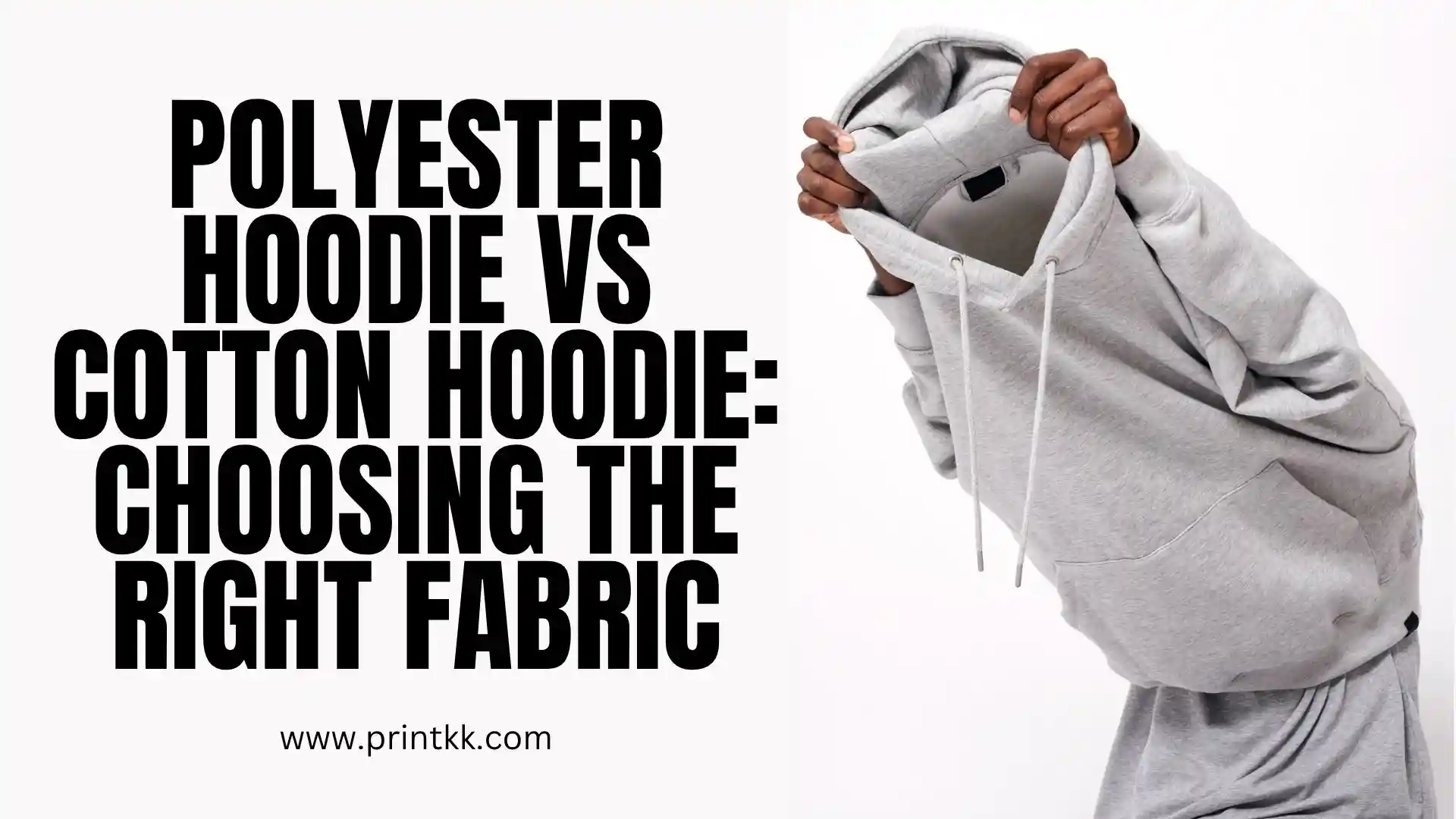
When it comes to comfort, style, and performance, few wardrobe staples compare to a good hoodie.
But with so many fabric options available, choosing between a polyester hoodie vs cotton hoodie can be confusing.
Each material has its own strengths—cotton offers softness and breathability, while polyester provides durability and moisture resistance.
In this guide, we'll break down the key differences, helping you decide which fabric best fits your needs, lifestyle, and budget.
Polyester Hoodie vs Cotton Hoodie: 7 Key Differences Explained
1. Breathability
Polyester Hoodie
Polyester hoodies are made from tightly woven synthetic fibers that limit airflow. They trap body heat, which keeps you warm but can also cause overheating during long wear.
You'll stay dry faster, yet the fabric doesn't allow your skin to breathe freely. For workouts or cold days, this may be helpful, but in warmer climates, it can feel uncomfortable.
Cotton Hoodie
Cotton hoodies are naturally breathable because they're made from plant-based fibers that let air circulate through the material. The softness and open weave of cotton allow heat and moisture to escape easily.
You'll feel cooler and fresher, especially when wearing it for casual or mild-weather activities. Cotton is ideal if you value airflow and skin comfort.

Custom Unisex Crewneck Sweatshirt (Made in USA) Customized Services - Print-On-Demand - PrintKK
2. Moisture Management
Polyester Hoodie
Polyester excels at moisture control. The fabric repels water rather than absorbing it, meaning sweat moves to the surface and dries quickly.
It keeps you dry and light, even during exercise or outdoor activities.
However, because it doesn't absorb moisture, trapped odor can become an issue, especially after intense workouts or prolonged wear.
Cotton Hoodie
Cotton, on the other hand, absorbs moisture easily. It can hold onto sweat or rain, becoming heavier as it gets damp.
Despite this, cotton helps regulate body temperature, keeping you cool in heat and warm in cooler air. The natural absorbency adds to its comfort, but drying takes longer, making it less practical for high-performance use.
3. Durability
Polyester Hoodie
Polyester is strong and highly resistant to wear and tear. It keeps its shape after many washes and resists shrinking or stretching.
Its resilience makes it a go-to for long-term use, particularly for people who wash and wear hoodies often. The fibers also resist wrinkles and color fading, keeping the garment looking newer for longer.
Cotton Hoodie
Cotton hoodies are sturdy but less durable over time compared to polyester. Repeated washing can cause minor shrinking or fading.
Still, cotton often feels better with age, gaining softness and character. It's a fabric that breaks in rather than breaks down, which many people prefer for a more lived-in, relaxed look and feel.
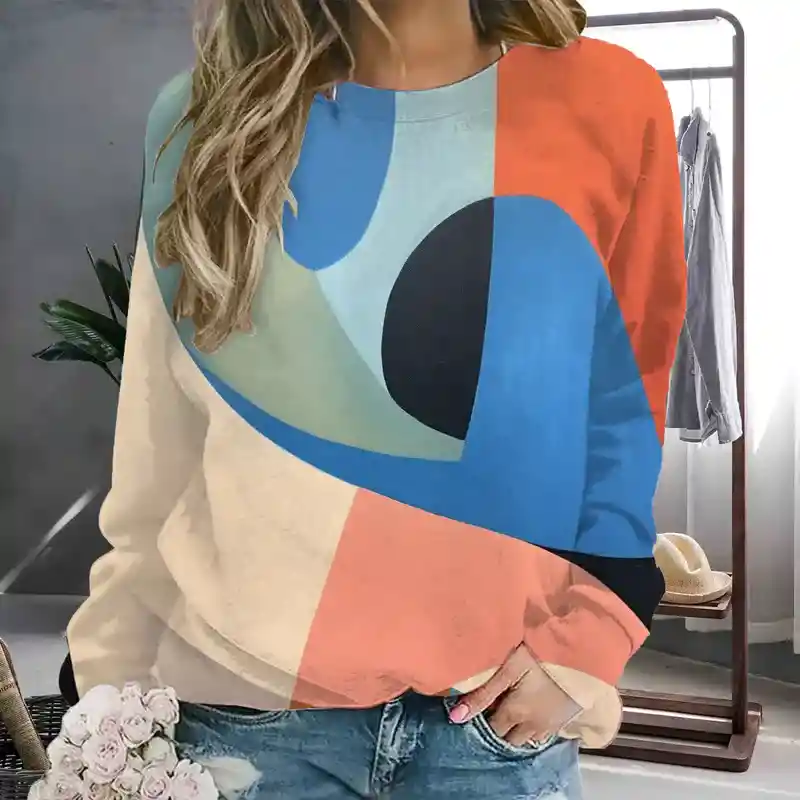
Custom AOP Raglan Crewneck Sweatshirts Women with Print on Demand - PrintKK
4. Comfort and Feel
Polyester Hoodie
Polyester hoodies have a smooth and lightweight texture, but they can sometimes feel less natural against the skin.
Over time, advanced polyester blends have improved comfort with softer finishes. You'll notice their sleek touch and light weight, which make them easy to layer, though they may lack the cozy warmth of cotton.
Cotton Hoodie
Cotton hoodies offer unmatched comfort with a naturally soft hand feel. They're gentle on your skin and get even softer after washing.
You'll appreciate the cozy texture when lounging or layering in cooler weather. Cotton provides warmth without feeling artificial, making it a favorite for those who prioritize natural comfort.
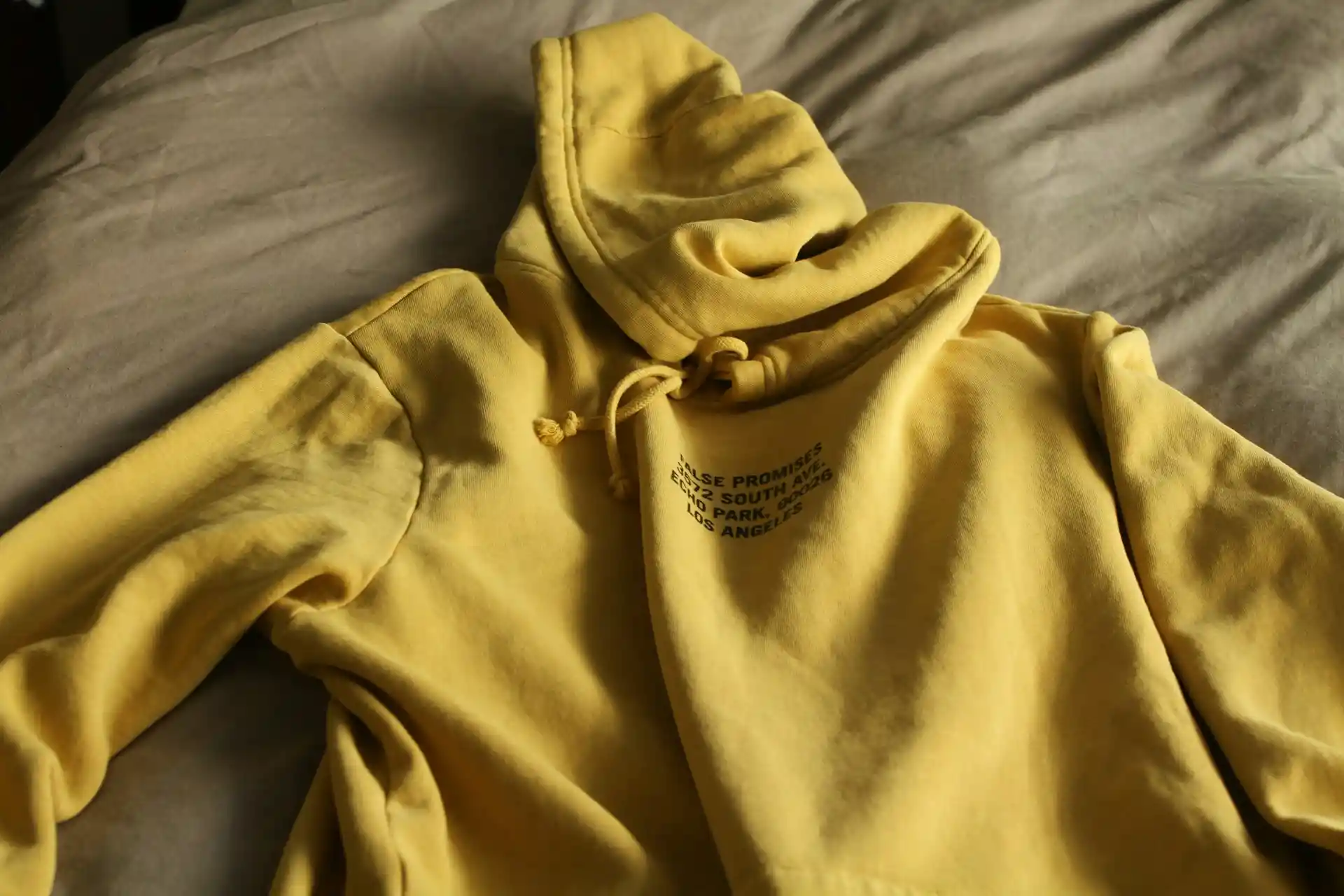
5. Warmth and Insulation
Polyester Hoodie
Polyester fibers trap heat efficiently, making the fabric a strong insulator. It's perfect for outdoor activities or cold days when you need warmth without too much bulk.
The synthetic weave locks in heat, ensuring you stay warm even when the air is cold. However, it can get too hot indoors or in mild weather.
Cotton Hoodie
Cotton provides a moderate level of insulation. It keeps you warm but not overheated. When wet, though, cotton loses heat retention, making it less ideal for damp or freezing conditions.
For casual daily wear, cotton hoodies deliver cozy warmth that feels balanced and natural, perfect for indoor comfort or cool evenings.
6. Care and Maintenance
Polyester Hoodie
Polyester hoodies are easy to care for and quick to dry. They resist wrinkles, shrinking, and stretching, making them practical for everyday use.
You can wash and wear them frequently without losing shape or color. The only downside is potential odor retention, so washing regularly is key to keeping them fresh.
Cotton Hoodie
Cotton requires a bit more attention during laundry. It may shrink if washed in hot water or tumble-dried on high heat.
You'll need to wash it gently and allow it to air dry when possible to preserve its shape and feel. While it takes longer to dry, cotton maintains its softness and breathability through careful handling.
7. Sustainability
Polyester Hoodie
Polyester is made from petroleum-based materials, meaning it's not biodegradable. It lasts longer but contributes to microplastic pollution with each wash.
Some versions use recycled fibers, but overall, polyester's environmental impact remains high. It's strong and practical, though less friendly to the planet.
Cotton Hoodie
Cotton is a natural and biodegradable fiber, especially when organically grown. Choosing organic or sustainably sourced cotton helps reduce pesticide use and water waste.
While cotton requires more resources to produce, it breaks down naturally over time, offering a more eco-conscious choice for those who value sustainability.
Cotton vs Polyester: Which Is Better for Custom Printing?
The material you pick affects how bright the colors are, how long the print lasts, and how the garment feels. Choosing the right fabric is important if you want your custom hoodie print to look good.
Cost & Practical Considerations
Cost is one of the first things you need to consider.
- Cotton: Slightly more expensive, but soft and natural. It is a good choice for high-end or eco-friendly brands.
- Polyester: Cheaper and easy to produce in large quantities. It works well if you need many hoodies.
- Blends (Cotton + Polyester): Offer a balance. They are less expensive than pure cotton and often print better than pure polyester.
Think about your budget, the number of items you need, and the image you want to create before choosing a fabric.
Screen Printing Performance
Screen printing works differently on each fabric:
Cotton
- Absorbs ink well
- Colors appear bright
- Prints last longer
- You can use regular ink without special preparation
Polyester
- Ink can spread or fade due to "dye migration"
- Requires low-temperature ink and sometimes a white base layer (blocker)
- Careful preparation is needed to avoid smudges
Blends
- Print quality is better than pure polyester
- Colors may not be as bright as pure cotton
For screen printing, cotton gives the easiest and most vibrant results. Polyester needs more work, but it is still possible with the right approach.
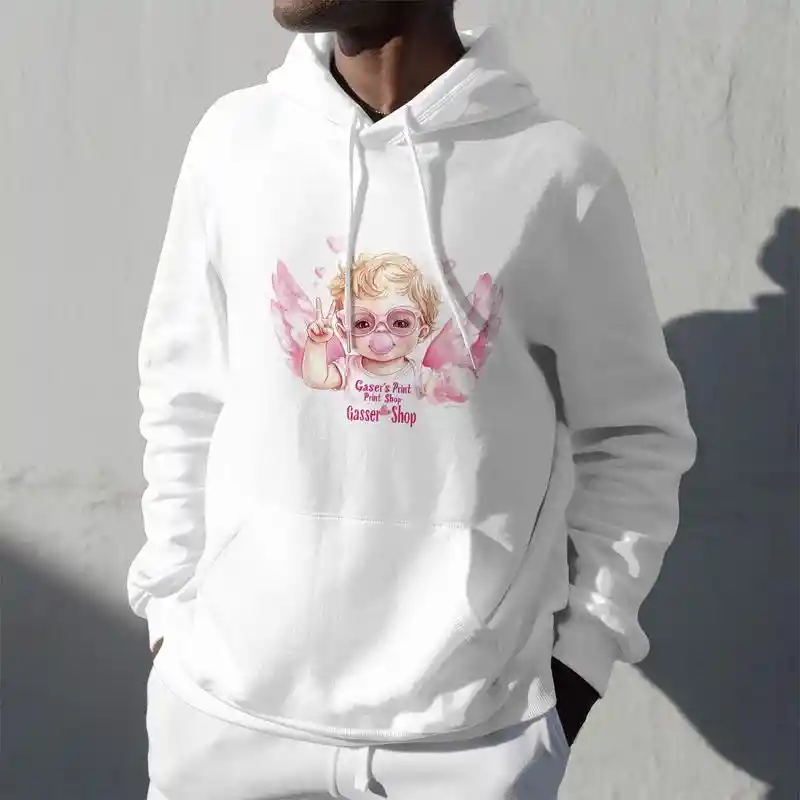
Direct-to-Garment (DTG) Printing
DTG printing works best on fabrics that absorb ink easily:
Cotton:
- Holds ink well
- Prints look clear and detailed
- Minimal preparation needed
Polyester:
- Ink does not stick well
- Prints can fade or peel quickly
Tips for Polyester:
- Use a special pretreatment solution
- Or choose a high-cotton blend for better results
If you want high-detail images or small designs, cotton or a cotton-rich blend is the safer choice for DTG.
Sublimation Printing
Sublimation is different from other printing methods:
- Only works on polyester or polyester-rich blends
- Colors are bright and permanent
- Prints are resistant to washing and fading
- Does not work on pure cotton
Sublimation is ideal for:
- Sportswear
- Team uniforms
- Functional hoodies or jackets
If your design requires bold, long-lasting colors and you are okay with polyester, sublimation is a great option.
Embroidery
Embroidery works on both cotton and polyester, but each fabric has its own feel:
- Cotton: Soft and natural
- Polyester: Stronger and keeps its shape better
Tips for embroidery:
- Adjust needle density based on the size of the logo
- Match thread color with the fabric
- Consider fabric thickness to avoid puckering
Embroidery is a safe choice if you want a professional look and do not mind a slightly raised design.
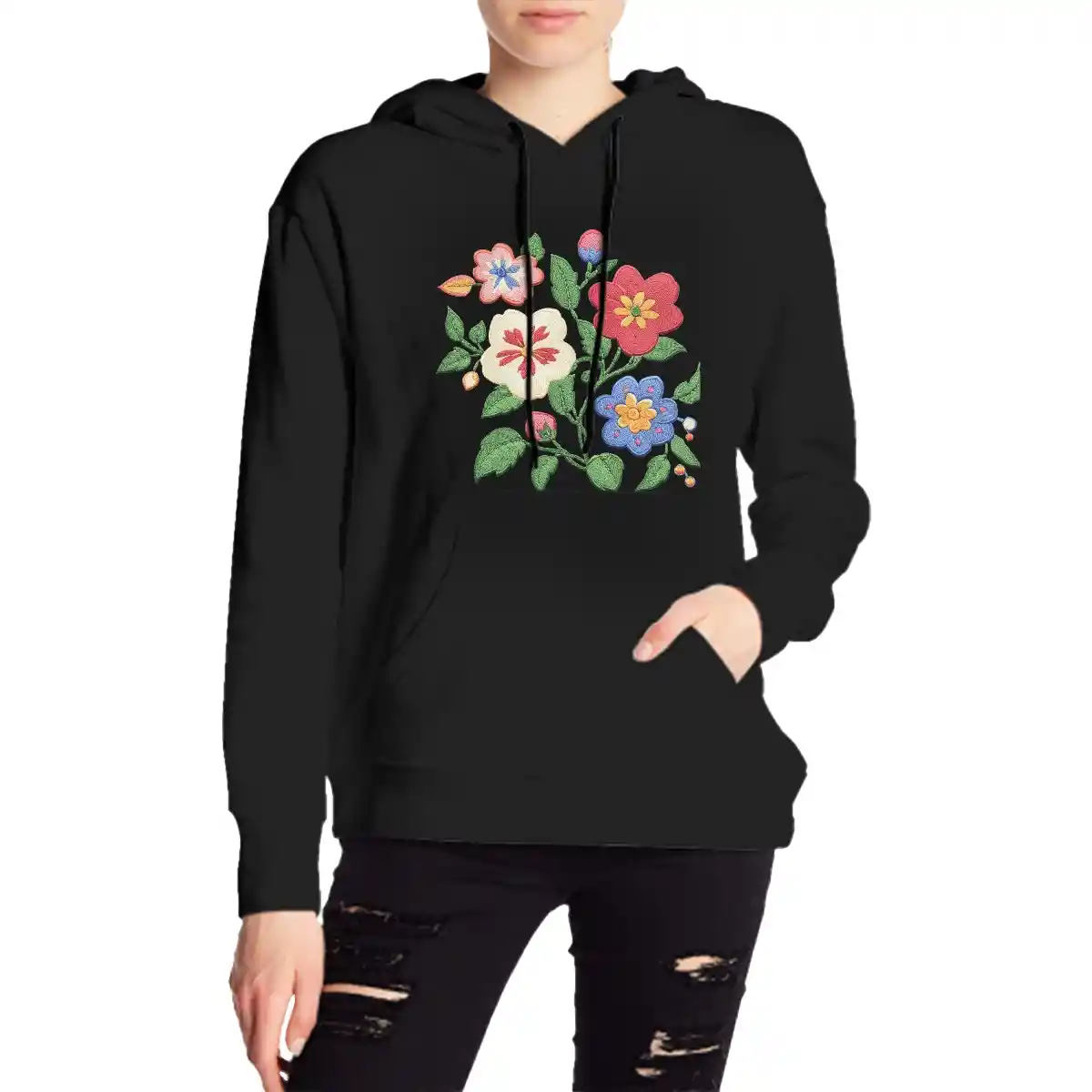
Custom Printed on Demand Couple's Thick Hoodie - Women's Clothing - PrintKK
Why Many Hoodies Use Polyester Blends Instead of 100% Cotton
When you look for a hoodie, you might notice that most are not 100% cotton. Polyester is added to improve strength and durability, making the fabric resist shrinking, stretching, and stains. It also dries faster after washing, which makes it easier to care for regularly.
100% cotton hoodies tend to be thinner than you might expect. Cotton provides warmth and a soft feel, but polyester adds cushiness and structure.
This is especially helpful in hoodies with "heather" colors, as the blended fibers create the desired look and texture.
Polyester also gives a slight sheen and makes the fabric more wrinkle-resistant. A common blend, like 80% cotton and 20% polyester, balances comfort and durability.
You get a hoodie that holds its shape and appearance longer while still keeping the cozy feel of cotton. That's why most fleece hoodies you see are blends rather than pure cotton.
Even if you prefer natural fibers, adding polyester is practical. It makes the hoodie stronger, easier to maintain, and better suited for repeated wear. Blended hoodies are simply more reliable for daily use than 100% cotton options.
Polyester vs Cotton Hoodie: Choose by Lifestyle
Active Days
If you spend a lot of time running, hiking, or moving around, polyester blends are practical.
A common 70/30 or 80/20 cotton/polyester hoodie wicks sweat and dries faster than 100% cotton, so you stay lighter and more comfortable.
Pure cotton absorbs moisture, which can feel heavy and slow you down during intense activity.
Casual Wear
For relaxed days at home or running errands, cotton-dominant blends work well. A hoodie with 60–80% cotton feels soft, breathable, and cozy while still holding its shape.
Polyester adds subtle stretch and durability, so the hoodie doesn't lose form even with frequent wear.
Mixed Climates
When temperatures fluctuate, consider how each fabric behaves.
Polyester keeps warmth trapped, while cotton regulates body temperature naturally.
A 70/30 blend offers balance: warmth when needed, breathability when you move, and a consistent fit without sagging.
Care and Convenience
Your lifestyle affects how often you wash hoodies.
Polyester blends resist shrinking, wrinkles, and stains, making them easier to maintain than pure cotton.
Choosing a blend ensures low-maintenance comfort, letting you focus on your day without worrying about laundry hassles.
Read More:
5 Other Hoodie Fabrics You Should Know About
Fleece
Fleece is a comfortable and cozy fabric that's commonly found in casual hoodies. You'll find that fleece keeps warmth in well, which is ideal for those chilly days.
It's lightweight, so it can be worn under jackets or on its own. Some prints may not be as sharp because of the fuzzy texture on the inside, and most fleece is synthetic, though natural options exist.
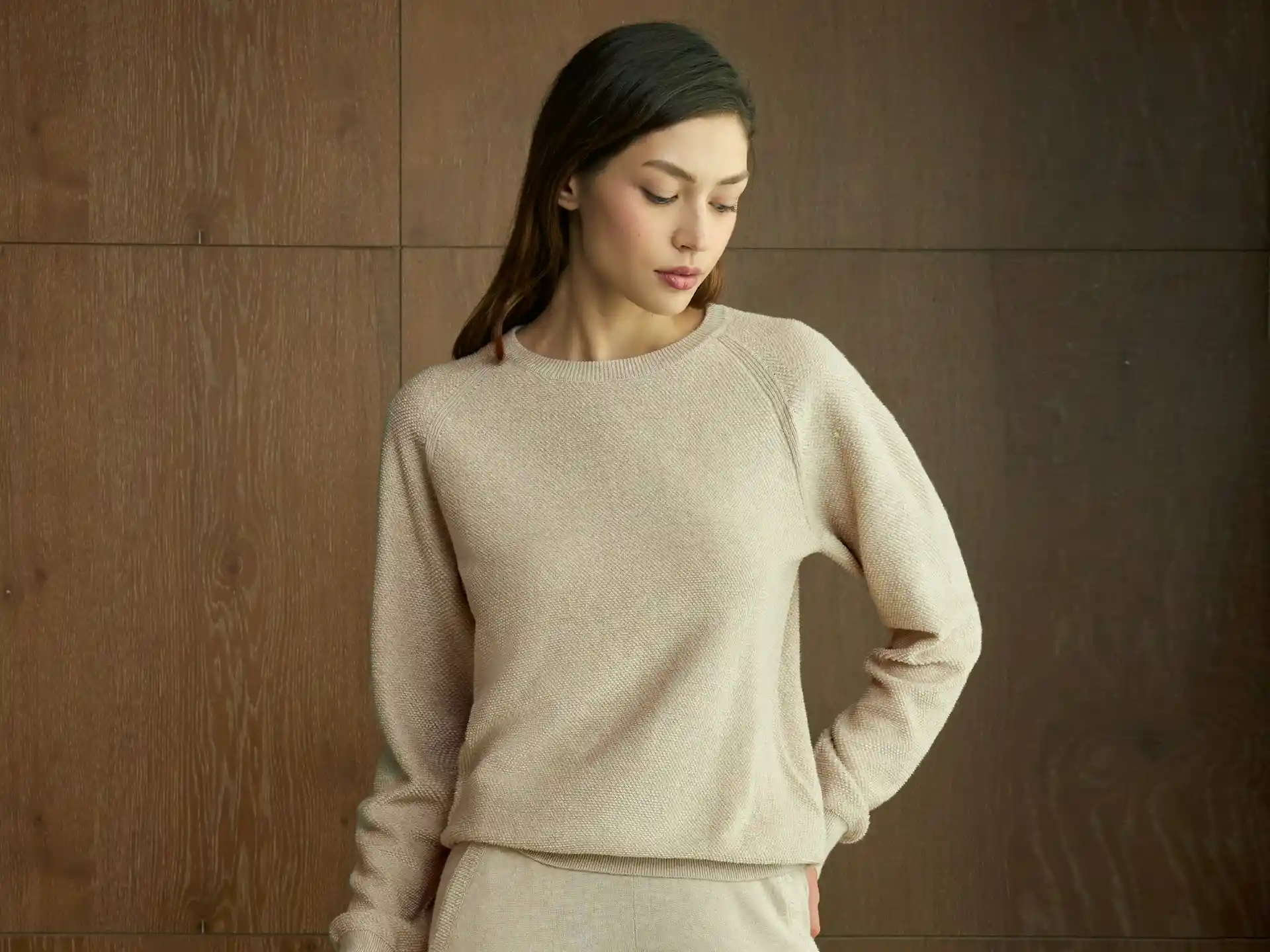
French Terry
French terry features loops on the inside and a smooth outside, so it has a nice, comfortable texture without being too heavy.
French Terry is breathable while still feeling cozy, which makes it great for warmer weather. It also has a bit of stretch, so your hoodie moves with you.
French terry hoodies can also be sturdy enough to withstand many washings and wear, which is practical.
Bamboo Fabric
Bamboo is known for being soft, eco-friendly and having a natural wick to keep you dry. If you've got comfort and sustainability on the brain, bamboo keeps you dry and cool, but still feels soft against your skin.
The bamboo hoodies are lighter than fleece and warmer than thick cotton, which makes for a happy medium in terms of what you want to wear every day.
Wool Blends
Wool blends combine wool with other fibers such as cotton or polyester. Notice how effective the wool blends are in keeping heat, so while the blend is very good for very cold days.
They may be a bit heavier and thicker than other fabrics, but they're also often resistant to wrinkles and odors. Hoodies made from wool blends look a bit more polished than the usual casual cotton or polyester.
Performance Fabrics
Performance fabrics are also made for active use and will frequently consist of a polyester, spandex, or nylon blend.
You'll love the fact that they wick sweat and dry fast to help keep you comfortable while exercising or participating in outdoor activities.
They're stretchy, durable fabrics too, so your hoodie is designed to handle frequent use even if it's worn often.
Read More:
Expert Tips
When choosing a hoodie, understanding your needs matters most. The debate between polyester hoodie vs cotton hoodie comes down to your lifestyle and priorities.
Polyester offers durability, quick drying, and low maintenance. Cotton provides softness, breathability, and natural comfort. Blends give you the best of both worlds.
Think about how you will wear it, how often you will wash it, and the climate you live in. Your choice matters for both comfort and practicality.
FAQs
What is the best material for hoodies?
The best hoodie material depends on your needs. Cotton is soft and breathable, ideal for casual wear. Polyester is durable and dries quickly, making it better for activity. A blend often combines comfort and performance.
Are cotton hoodies better than polyester?
Cotton feels softer and more natural on your skin, while polyester lasts longer and handles moisture better. Neither is strictly better; it depends on whether you value comfort or durability more in your daily use.
What's better, 100% cotton or 100% polyester?
100% cotton gives a cozy, breathable feel but can shrink and stain easily. 100% polyester resists wrinkles and dries fast. Blended hoodies are often the most balanced option, combining softness and strength.
What is the warmest material for a hoodie?
Polyester retains heat well, even when damp, making it warmer than cotton in cold or wet conditions. Cotton feels comfortable but loses warmth when wet. For consistent insulation, blends often perform best.










 Global Shipping
Global Shipping


 Made in USA
Made in USA



























